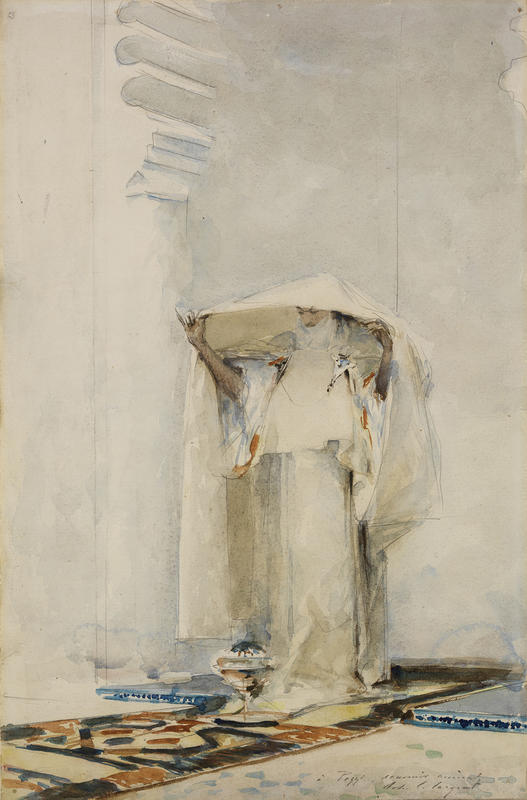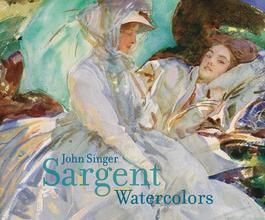More about Incensing the Veil
- All
- Info
- Shop

Contributor
John Singer Sargent's Incensing the Veil is a watercolor copy of another painting the artist made in Morocco.
The original painting satisfied him, but he wanted another one, for some reason. Writers guess about his reasoning: maybe Sargent wanted to make another one for an admirer, or maybe it was for his family, as its smaller size was easier to send back to Europe while he was working on the details of the main, bigger piece. The former owner of the painting, Isabella Gardner, whose collection was so extensive that it became a museum, was also the subject of a remarkable Sargent painting.
You might think that art critics would offer, I dunno, criticism of the painting, but the critics have mostly been leading the charge to wax about how attractive the woman is, how her spirit has entranced them. Strangely, it substitutes the anonymous woman for the work itself, analyzing her as if she was the artwork. We only say "anonymous" because so many writers have said it. But somebody certainly knew who she was then, and somebody does now. Her anonymity is a hedge against the possibility of her actual identity ruining the fantasies of the writers. Her identity is hidden behind the active desire not to know.
Less than twenty years ago, Yale University Press published Trevor Fairbrother referring to the model as "dusky." "Dusky" is not a good way to describe someone, but Yale University Press is Yale University Press. They do whatever they want! Just ask former president, Yale alum, and oil painter, George W. Bush.
Incensing the Veil joins works of Ingres and many other painters of the era in being a 'wink, wink, nudge, nudge' work, as if to say, "we know that the veil is supposed to protect the modesty of women in Islam and Judaism, so let's obsess over the veiled non-Christian woman, because modesty is the only thing that is still foreign to us, and if we obsess over Christian women we will get in trouble." The artists were getting as close as they could to the veiled woman without converting to Islam or Judaism. Conversion would have entailed certain obligations, like prayer and fasting, and they didn't want those obligations. The purpose of the painting of the veiled woman is to provide a fantasy. Fairbrother associates the painting with the "esoteric" interests of Sargent. I guess aromatherapy is esoteric, if you smell like B.O.
Speaking of odors, it turns out that the model in the painting is burning half-digested feces from a whale's intestines, a substance which is now illegal in the U.S. At first, believe it or not, "ambre gris," the whale feces, actually smells like feces! But after a while, it changes its smell and becomes important for perfumes of the time.
Sources
- Fairbrother, Trevor J. John Singer Sargent: The Sensualist. New Haven: Yale University Press, 2000.
- Foster, Kathleen A. American Watercolor in the Age of Homer and Sargent. New Haven: Yale University Press, 2017.
- Jenike, Lesley. "miCRo: 'The Rape of Europa' and 'Incensing the Veil' by Lesley Jenike." Cinncinnati Review, Feb. 14, 2018, https://www.cincinnatireview.com/micro/micro-the-rape-of-europa-and-inc….
- Skolnick, Arnold. The Watercolors of John Singer Sargent. Berkeley: University of California Press, 1998.












